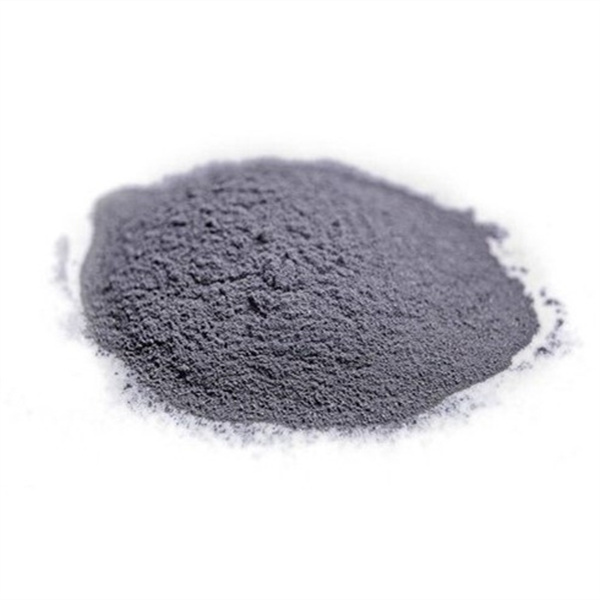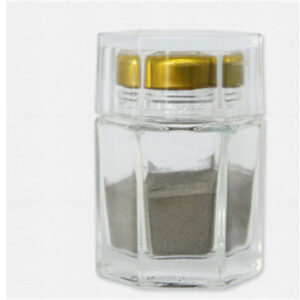Bubuk bulat menampilkan morfologi partikel bulat dibandingkan bentuk yang tidak beraturan. Panduan ini memberikan gambaran komprehensif tentang jenis serbuk bulat, metode produksi, karakteristik, aplikasi, pemasok, dan pro/kontra.
Gambaran Umum Bubuk Bulat
Atribut utama dari serbuk bulat:
- Partikel memiliki morfologi bulat
- Diproduksi dengan atomisasi gas atau air
- Lebih mengalir bebas daripada bubuk yang tidak beraturan
- Memungkinkan kepadatan kemasan yang lebih tinggi dan kepadatan sinter
- Digunakan dalam pembuatan aditif dan metalurgi serbuk
- Tersedia dalam berbagai jenis logam, paduan, dan keramik
Bentuknya yang bulat memberikan keuntungan dalam penanganan, konsolidasi, dan performa.

Jenis-jenis Bubuk Bulat
Jenis bedak bulat yang umum meliputi:
- Serbuk logam - baja tahan karat, titanium, aluminium, paduan nikel
- Serbuk paduan - baja perkakas, superalloy, paduan besi
- Serbuk keramik - alumina, zirkonia, silika
- Serbuk karbida - tungsten karbida, silikon karbida
- Logam mulia - emas, platinum, perak
Baik logam murni maupun paduannya diproduksi dalam bentuk bola.
Metode Produksi
Dua metode utama menghasilkan bubuk bulat:
Atomisasi Gas
- Aliran logam yang dilebur dengan induksi, plasma, atau berkas elektron
- Gas inert bertekanan tinggi (N2, Ar) memecah aliran menjadi tetesan
- Tetesan mengeras menjadi partikel bulat
- Menghasilkan distribusi ukuran partikel yang rapat
Atomisasi Air
- Aliran logam cair menabrak semburan air
- Logam hancur menjadi tetesan bulat
- Bentuk yang lebih tidak beraturan daripada atomisasi gas
- Distribusi partikel yang lebih luas
- Biaya lebih rendah daripada atomisasi gas
Atomisasi gas lebih disukai untuk aplikasi kritis yang membutuhkan keseragaman.
Karakteristik
Menyediakan serbuk bulat:
- Kemampuan mengalir yang lebih baik karena kebulatan dan kehalusan permukaan
- Kepadatan kemasan yang lebih tinggi dibandingkan dengan bubuk yang tidak beraturan
- Peleburan partikel yang lebih seragam menghasilkan densifikasi yang lebih baik
- Penyusutan isotropik selama sintering
- Mengurangi porositas yang terperangkap setelah pemadatan
- Memungkinkan lapisan bubuk yang lebih tipis dalam pembuatan aditif
Bentuknya yang bulat memberikan manfaat penanganan dan performa.
Aplikasi dari Bubuk Bulat
Penggunaan umum yang memanfaatkan sifat bubuk bulat:
- Manufaktur aditif logam - penyebaran bubuk yang lebih baik, cetakan yang padat
- Cetakan injeksi logam - meningkatkan pemuatan dan aliran bubuk
- Penyemprotan termal - peleburan partikel yang lebih konsisten
- Metalurgi serbuk - kepadatan yang lebih tinggi dengan tekanan yang lebih rendah
- Lapisan serbuk - peningkatan fluidisasi dan hasil akhir permukaan
- Elektronik - bubuk konduktif berbentuk bola untuk kontak, sirkuit
Serbuk bulat meningkatkan proses manufaktur yang melibatkan aliran dan peleburan serbuk.
Spesifikasi
Spesifikasi bubuk bulat utama:
- Kimia - toleransi komposisi
- Ukuran partikel - statistik distribusi
- Morfologi - kelindan, kehalusan
- Kepadatan yang tampak dan kepadatan keran
- Laju aliran melalui lubang standar
- Luas permukaan spesifik - Metode BET
- Kotoran - batasan untuk kotoran gas/logam
Standar meliputi ISO, ASTM, ASME, dan standar khusus industri.
Pemasok
Pemasok global terkemuka untuk bubuk bulat meliputi:
- Sandvik Osprey - Jangkauan terluas dari serbuk bulat
- Aditif Tukang Kayu - Pilihan paduan yang dikabutkan dengan gas secara luas
- AP&C - Mengkhususkan diri dalam memproduksi titanium bulat dan paduan nikel
- Erasteel - Serbuk bulat untuk semprotan termal dan MIM
- Linde Gas - Teknologi atomisasi dan produsen serbuk logam
- Ampal Inc - Serbuk titanium, aluminium, dan paduan lainnya yang berbentuk bulat
Pemasok yang memiliki reputasi baik memastikan kualitas dan konsistensi yang dapat diandalkan.
Analisis Biaya
Serbuk berbentuk bulat dikenakan biaya lebih tinggi daripada serbuk tidak beraturan:
- Peralatan atomisasi gas memiliki biaya modal yang tinggi
- Diperlukan langkah pemrosesan tambahan
- Kehilangan hasil bahan baku dari bubuk yang terlalu besar/terlalu kecil
- Pengayakan yang lebih ketat menghasilkan lebih banyak aliran daur ulang
- Dibutuhkan bahan baku dengan kemurnian yang lebih tinggi
- Harga premium sekitar 30-50% di atas bedak biasa
Manfaatnya sering kali membenarkan titik harga yang lebih tinggi.
Pro dan Kontra Bedak Bulat
| Keuntungan | Kekurangan |
|---|---|
| Kemampuan mengalir yang sangat baik | Lebih mahal dari bedak biasa |
| Kepadatan pengepakan yang lebih tinggi | Kisaran ukuran terbatas |
| Peleburan yang lebih seragam | Produksi yang lebih terkendali |
| Mengurangi porositas | Kepadatan yang tampak lebih rendah |
| Daya sebar yang lebih baik | Tingkat pengotor yang lebih tinggi daripada bentuk tempa |
Serbuk bulat memberikan manfaat yang signifikan meskipun ada beberapa kekurangan.
Bedak Bulat vs Bedak Tidak Beraturan
| Parameter | Bubuk Bulat | Bedak Tidak Teratur |
|---|---|---|
| Bentuk | Bulat | Bergerigi, tidak rata |
| Kemampuan mengalir | Luar biasa | Adil |
| Kepadatan pengepakan | Lebih tinggi | Lebih rendah |
| Resolusi pencetakan | Lebih tajam | Miskin |
| Biaya | Lebih tinggi | Lebih rendah |
| Ketersediaan | Paduan terbatas | Paduan yang paling umum |
Pilihan optimal tergantung pada persyaratan aplikasi.

PERTANYAAN YANG SERING DIAJUKAN
Untuk apa bubuk bulat digunakan?
Serbuk bulat sangat ideal untuk pembuatan aditif, cetakan injeksi logam, penyemprotan termal, dan aplikasi metalurgi serbuk yang membutuhkan aliran dan konsolidasi padat.
Mengapa bedak berbentuk bola lebih mahal?
Produksi atomisasi gas khusus dan spesifikasi yang lebih ketat yang diperlukan menghasilkan biaya yang lebih tinggi untuk bubuk bulat dibandingkan dengan bubuk tidak beraturan.
Apa keuntungan utama dari serbuk bulat?
Manfaat utamanya adalah peningkatan aliran serbuk selama penanganan dan pemrosesan, sehingga memungkinkan kepadatan kemasan yang lebih tinggi dan keseragaman pengendapan material.
Logam apa yang tersedia dalam bentuk bubuk bulat?
Pilihan umum termasuk baja tahan karat, baja perkakas, titanium, aluminium, nikel, paduan kobalt. Paduan khusus dapat dibuat, tetapi mungkin memerlukan produksi khusus.
Apa perbedaan antara atomisasi gas dan air?
Atomisasi gas menghasilkan partikel yang lebih bulat dan distribusi yang lebih rapat, sedangkan atomisasi air memiliki biaya yang lebih rendah tetapi bentuk serbuk yang kurang seragam.
Serbuk bulat memberikan keuntungan yang signifikan yang membenarkan penggunaannya jika memungkinkan.
Kesimpulan
Serbuk bulat yang dihasilkan oleh atomisasi gas atau air memberikan peningkatan aliran bubuk dan densifikasi yang sangat penting untuk pembuatan aditif, penyemprotan termal, metalurgi serbuk, dan pencetakan injeksi bubuk. Morfologi bulatnya memungkinkan kepadatan kemasan yang lebih tinggi dan perilaku peleburan yang seragam. Meskipun lebih mahal daripada bubuk tidak beraturan, partikel bulat mengoptimalkan pemrosesan dan kinerja untuk komponen penting di seluruh aplikasi kedirgantaraan, medis, otomotif, dan industri. Peningkatan berkelanjutan dalam teknologi atomisasi yang dikombinasikan dengan pertumbuhan manufaktur berbasis bubuk akan mendorong peningkatan pengembangan dan adopsi bubuk bola berkualitas tinggi.




